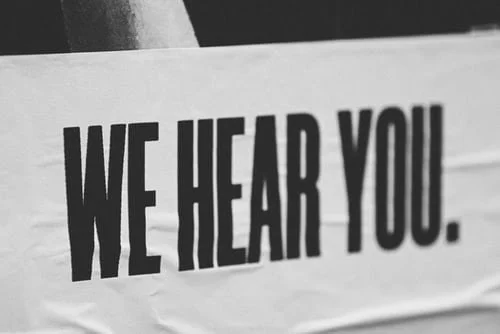What Is Your Client NOT Saying?
We all rely on communication to keep our businesses running. We interpret smiles, head nods and handshakes as evidence of customer satisfaction…but what happens when your customer relationship slowly turns sour? The smiles may be an outcome of courtesy or habit. The nods may hide a growing cache of dissatisfaction or unrealized expectations. Learn to assess the nonverbal communication signaling dissatisfaction before it leads to losing a client.
It begins with active listening. My first career goal landed me in nursing. The profession beckoned me in various stages of my life and prepared me for what I do today. One very enlightening course focused on learning to pick up on the nonverbal cues in conversation, the kind which evoke warning signals.
Begin by focusing your full attention on the words and nuances of the person opposite you. Learn to reflect what a customer has just said. This allows you to check your perceptions and be in sync with this person whose patronage you appreciate. Make notes of what you learn, because you meet many people in the course of a day. Remembering what you learn about a client is a key step in the person feeling valued by you or your firm.
Non-verbal cues communicate volumes! If your client is smiling, relaxed, raises eyebrows in conversation; if your customer maintains eye contact as you visit; if your client is leaning forward, eager for more information…we all recognize these as positive vibes. Those in sales learn to read these cues, but we in other forms of business sometimes take a person’s presence for granted and fail to recognize the growing signs of dissatisfaction: a furrowed brow, looking away in conversation, a tight smile, clipped conversation, motionless hands. Before a client leaves you, there will be tell-tale signals of growing dissatisfaction. It’s not always about price. Very often it has to do with relationships.
Delving more deeply, kinesics refers to the inevitable body movements in every customer/client interaction. We’ve looked at what your client is saying to you. What are you saying to your client? Your eye contact, hand shaking, nodding and orientation all inspire confidence. They suggest you are being both candid and honest. Your courtesy makes the person opposite you feel valued and respected. This creates a lasting client relationship. Go one step further. Paralanguage relates to the tone of your voice, word fluency, amplitude and tonal variation. An easy conversation demonstrates client satisfaction. This isn’t rocket science, nor is it new information. Think of this as a refresher course in how to measure and maintain customer satisfaction.
We’ve all been in business relationships in which we slowly edged toward the door and finally moved our valuable dollars elsewhere. It didn’t happen in a vacuum or a millisecond. It began with a hint of dissatisfaction. Perhaps your client is refusing some services. You begin to notice a coolness or reserve in your relationship. Take note! Stop! A whopping 89% of clients will switch businesses based on declining customer satisfaction. Talk honestly and find out what has gone wrong. Look closely. What is your client not saying? Failure to do so always affects your bottom line.
On the other hand, maintaining a healthy nonverbal line of communication strengthens your business and helps it grow. Our hope for you is continued growth and satisfaction as you interact with clients.



